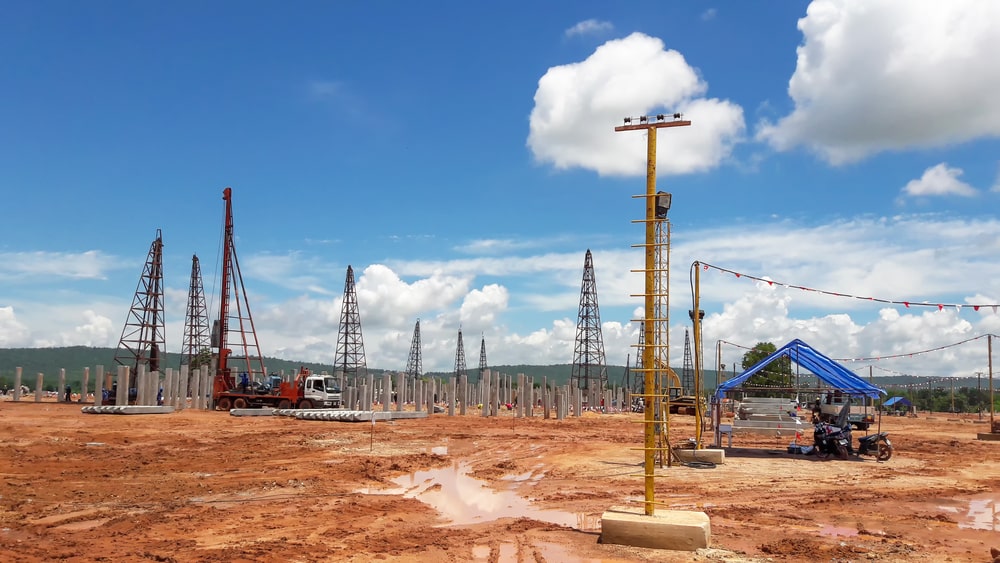Chapter 1 – Soil Mechanics Introduction
- Pile Buck Guide to Soil Mechanics and Testing
- Chapter 1 – Soil Mechanics Introduction
- Chapter 2 – Identification and Classification of Soil and Rock
- Chapter 2 – Section 1: Soil Formation, Physical Properties, Moisture
- Chapter 2 – Section 2: Soil Surveys, Maps, Investigations, Samples
- Chapter 2 – Section 4: Soil Testing, Equipment
- Chapter 3 – Laboratory Tests and Index Properties of Soils
- Chapter 3 – Section 1: Bituminous Mixtures
- Chapter 4 – Field Exploration, Testing, and Instrumentation
- Chapter 6 – Soil Seepage and Drainage
- Chapter 7 – Analysis of Settlement and Volume Expansion
- Chapter 8 – Slope Stability and Protection
For a complete version of this document click here.
Man’s earliest attempts at construction probably involved soil. As civilization developed through many centuries, man learned by trial and error about soil as a foundation material. Since World War I, much understanding of soil behavior has been achieved by applying the principles of physics, mechanics, hydraulics, strength of materials, and structural engineering. This approach to analyzing soils problems is called “soil mechanics.”
Analysis of soil is more complex than the analysis of other construction materials. Steel and concrete are relatively uniform solids that have predictable strength properties within the elastic range of loading. The strength may be “ordered” in the manufacture of steel and in the making of a concrete mix. This strength will be constant under all climatic conditions. Structures can then be built of these materials with confidence in their strength.
On the other hand, because soil is a very complex medium, a workable solution to soil problems cannot be achieved by a linear, theoretical solution only; it can be reached by a combination of the following sources of information.
1. Experience obtained by trial and error in the past; this developed into the empirical or “rule of thumb” procedures for today. The weakness of this approach is not recognizing differences in the engineering properties of soils. What works well at one location may not succeed with the same type of soil at another location.
2. Information on the properties of soils; generally obtained by field explorations and laboratory tests. Subsequent, theoretical analysis results will only be as good as the soils data used as input.
3. Scientific principles from various fields of engineering and science; used to explain or predict the behavior of soils under various conditions.
Once the soil is analyzed, the foundation must be designed so that the foundation carries the load while not exceeding the capacity of the material either of the foundation itself or the soil under or around it. This having been done, the design is implemented in the construction of the site.
The successful transfer of design objectives into construction is accomplished by consideration is accomplished by consideration of construction operations during the design phase. In recent years, the amount of coordination between design and construction has steadily decreased; primarily due to graduate engineers who specialize in design and who are never exposed to construction operations. In past years, engineers either began their careers in construction and advanced into design, or were assigned the design and construction responsibilities for projects. Present lack of coordination stemming from inexperience with field operations can result in a technically superior set of construction plans and specifications that cannot be built. Rational construction control is vital to assure a safe, cost-effective foundation and to avoid unnecessary court of claims actions.
-
 SPW911 Sheet Pile Design Software
Rated 5.00 out of 5$150.00 – $599.99Price range: $150.00 through $599.99
SPW911 Sheet Pile Design Software
Rated 5.00 out of 5$150.00 – $599.99Price range: $150.00 through $599.99 -
 Sheet Pile Design (PDF Download)
Rated 5.00 out of 5$89.00
Sheet Pile Design (PDF Download)
Rated 5.00 out of 5$89.00 -
 Pile Driving (PDF Download)
$89.00
Pile Driving (PDF Download)
$89.00
-
 Marine Construction Volumes 1 & 2 (PDF Download)
$157.00
Marine Construction Volumes 1 & 2 (PDF Download)
$157.00
-
 Pile Driving (Book)
$89.00
Pile Driving (Book)
$89.00










